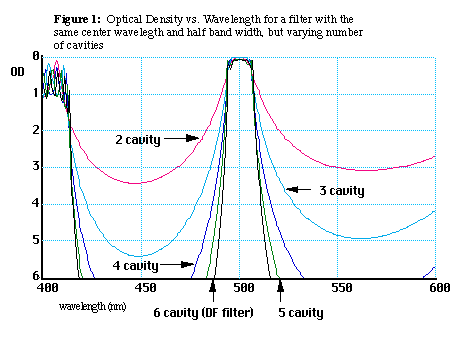|
Home Page | Products | Contact Us | News & Events | Request Info. |
||||
|
|
Optical Filters for All Occasions |
|
||
|
|
||||
|
|
Bandpass FiltersBandpass filters transmit light only within a defined spectral band ranging from less than one to many nanometers wide. Bandpass filters are used in spectral photometry, clinical diagnostics, chemical analysis, colourimetry, astronomy, and numerous applications where spectral isolation is required. Single Cavity (SC) bandpass filters provide very narrow bandwidths between 0.10 - 0.25nm from the ultraviolet through the near infrared spectral regions. Narrow-band (NB) filters are two-cavity designs with half bandwidth (HBW) typically between 0.2 and 8.0nm. Bandpass (BP) series filters are three-cavity designs and feature HBW between 0.4 and 50nm in the ultraviolet to infrared spectral range. Wide-band (WB) filters are four and five cavity with HBW usually greater than 30nm and up to several hundred nanometers in the UV, visible and IR spectral range. Discriminating Filters (DF) have greater than 3,500 degrees phase thickness from numerous interfering cavities, resulting in a bandpass filter with extremely rectangular shape, very steep edges, and especially deep blocking exceeding Optical Density (OD) 6 outside the passband. Raman Discriminating Filters (RDF) are similar to DF filters, but are custom engineered for applications requiring signal-to-noise of > 8 orders of magnitude over a limited spectral range.
|
|
Back to top | Home Page | Products | Contact Us | News & Events | Request Info. |
|
|
|
|
|
|
|
|
Copyright © 2007 Glen Spectra All rights reserved |
|


